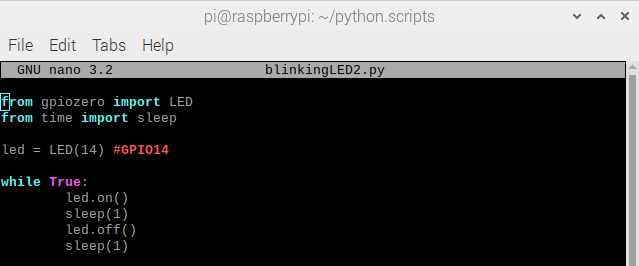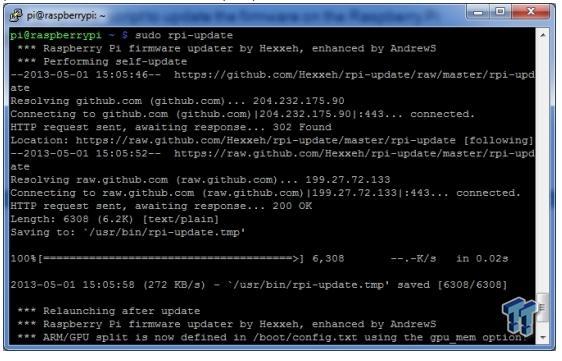

Insert your SD card and format it according to the Foundation’s directions. Put the Pi aside and go to your primary computer.Unless it’s very customized, it should continue to have holes in it for all of the Pi’s inputs. Now, let’s fast-forward to the day when your Raspberry Pi and all its accessories arrive in the mail. A lot of computers come with a built-in card reader, but if yours doesn’t, you might want to invest in one. The Raspberry Pi doesn’t need this, but your primary computer does so you can transfer installations from it to the Pi. Hopefully you already have one of these, or this project just got a lot more expensive.
#How to make a program run at startup rpi mac#
I didn’t get that you can’t just get the Pi running without already owning another computer, Mac or PC. The Raspberry Pi foundation recommends at least 4 gigs to start, but as many as 32 if you want. Or else how will you interact with the Pi? Any wired or wireless mouse and keyboard should do I’m using wireless Logitech products for both.
#How to make a program run at startup rpi tv#
You can either plug it into a computer monitor with HDMI input using an HDMI cable, or you can plug it into an analogue TV with a standard RCA composite video lead. You can’t use your Pi without a visual display. Unfortunately, despite what you may have heard, it does not fit in an Altoids tin. There’s no official one yet, so I put mine in this pink one from Adafruit. Raspberry Pi doesn’t come with one, so you’ll need a micro USB compatible cable in order to plug it into the wall. Here are the accessories you’ll need to get up and running: You can’t just buy a Raspberry Pi and expect it to work right out of the box. Still, the $35 price tag is a bit misleading. So it’s not just cheap, it’s simple, too. Without a lot of chips to take up space, the Pi itself can consist of a printed circuit board which boots up from an SD memory card. Instead of having a CPU, a GPU, a USB controller, and memory each on their own individual chips, Raspberry Pi uses a system-on-a-chip with all those components on a single chip. Raspberry Pi owes its low price tag to advances in integrated chips. The Foundation hasn’t ruled out an eventual, more powerful Model C, but probably not for at least “ two to three years.” The B is not an improvement on A, and in fact was available first the A is just a lighter, cheaper version. Model B, which is $35, has double the memory, Ethernet, and a dual USB connector. Model A, which is $25, lacks Ethernet capability, has a single USB connecter, and 256MB of memory. Right now, there are two versions of the Raspberry Pi for sale- Model A and Model B, though neither is newer than the other. Nearly every flavor of OS that works on Raspberry Pi-Raspbian, Pidora and more-is a riff on the Linux kernel. Python is the Pi’s recommended programming language, but Linux is its recommended operating system. So the name stuck and it outlived the justification for the name. What we wanted to build was something that could run the Python programming language, and so ‘Pi’ was kind of a pun. There’s a history of fruit-named computer companies! There aren’t many that aren’t taken, and Raspberry is one of those. In an interview with Daily Brink, Upton explained how the device got its name: The Raspberry Pi Foundation was established in May 2009, and the first shipment of Raspberry Pis became available in April 2012. From 2006 to 2008, the official history goes, Upton and his colleagues worked on the prototype that would eventually become the Raspberry Pi.

Upton wanted to create a cheap, easily programmable computer that would bring back the experimental spirit of an earlier era of computing, by making a device cheap enough so anyone could tamper with it without fear of expensive mistakes. Plus, as computers became easier to use, programming them became more complicated, and tinkering with their inner workings became far less necessary. In later decades, Upton speculated, parents had more reason to forbid the same kind of experimentation on increasingly advanced family PCs. In the ’70s and ’80s, kids could use an Amiga or Commodore 64 to boot into a programming environment. Upton’s concern? That the price and sophistication of modern computers had made them overly complicated for kids to experiment with. While current students entering the program often had Web design experience, programming experience was becoming very rare.


 0 kommentar(er)
0 kommentar(er)
